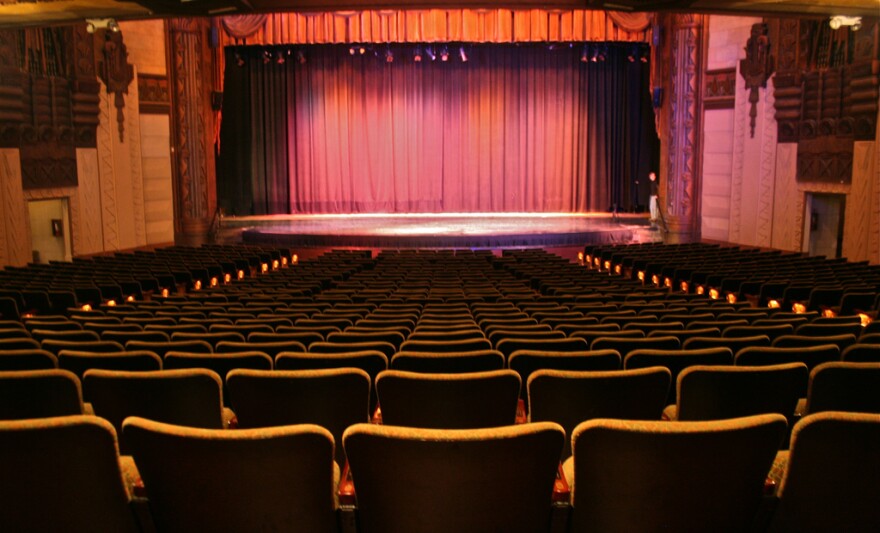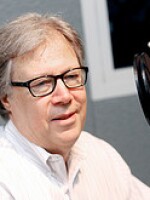There is now the question of what we mean by the term "audience."
For the past several years, I have taught an informal, one-credit seminar at The Hartt School called "Communicating With Your Audience."
The course itself dates back decades, and over the years it has been taught by various faculty members from various departments.
I think that when it began it really was mostly about how to walk onto a stage, how to take a bow, how to glare witheringly when the uninitiated clapped at the wrong moment, stuff like that.
More recently, we’ve been rethinking the class pretty completely, for the simple reason that the musical culture around us has been changing pretty completely.

Why do people listen to music? How do they decide what to listen to?
For one thing, there is now the question of what we mean by the term "audience." A musician’s audience today is not merely the people who buy a ticket to your recital and sit in a darkened hall while you play.
The audience is, quite literally, the whole world. It’s the people who visit your website, or who check out your performances on YouTube. It’s the people who stream your sample track, or who add you to their Spotify or Pandora playlists. Or if you’re really lucky, who actually pay to download your album on iTunes. Or if you’re unimaginably lucky, who purchase your CD.

The sessions of the class have evolved into conversations about the Big Questions:
Why do people listen to music? How do they decide what to listen to? Is there a body of music that modern, culturally aware listeners should know? What are the prospects for classical music in particular?
As we slide into the new year, here are three specific points that we will talk about in the class, and that all of us who care about the future of music should be thinking about:
1. Making a Living
When rock and pop musicians talk about how the business works these days, they tend to say something like, “Well, we know we won’t earn any real money on Spotify, and we know hardly anybody buys a physical recording anymore. So we’ll just hope that downloading and streaming of our recordings can create enough buzz so that we can sell tickets to our shows when we go out on tour.”
Aside from the irony that it’s still the recording that creates the hit song in the first place – and therefore establishes the visibility that any performer needs in order to sell tickets to their concerts -- this is not a model that has much of anything to do with classical musicians. Classical players don’t as a rule play arenas and stadiums. They need their recordings to provide not only visibility but also actual income.
Can these artists make do without that source of income? Will recordings have to become a kind of non-profit adjunct to the concert business? As with newspapers and magazines, we’re just now trying to figure out if the web-based model of offering and distributing the digital version of a formerly physical product has any future.
2. The Live Concert Experience
People talk about a classical music “crisis,” or the “death” of the music.
About a year ago, Slate ran a glib, amateurish piece entitled “Requiem: Classical Music in America is Dead.”
Despite the fact that it would have been a below-average submission in any decent high school journalism class, the piece got a lot of attention on the web. The New Yorker, among others, offered a deft rebuttal.
Yet for a lot of reasons, I think the essential perception of classical music as a dying enterprise is one that a lot of people hold. Sort of like how most people believe that the budget deficit is ballooning, when in fact it has been steadily shrinking.
For all the loose talk about how classical music is doomed, most indicators suggest otherwise. By all accounts – admittedly hard data is a little scarce – classical music is being downloaded and listened to in healthy numbers, probably much more so than when you had to walk into a store and purchase a disc. As an indicator of social relevance, the music turns up reliably on movie soundtracks, and perhaps all too reliably in TV commercials. (Aside: I have to say that I am not opposed to using “great” music to hawk goods and services, and in fact find it a kind of validation of the music’s power. But I do gag on the use of the other-worldly Lacrimosa section of the Mozart Requiem to accompany slo-mo images of some surly American family searching for an attractively priced hotel room, in the current Booking.com commercial.)

Presenters will say, ah, but there's nothing like the experience of live music. Well, yes, but that's only true if it's true.
And most convincing of all, there is a steady and seemingly growing wave of smart, gifted, dedicated young students filling the nation’s (and the world’s) conservatories and college music departments. They are homegrown, or they’re Asian, or eastern European, or whatever. They are young people with many choices in life and yet they choose to pursue the classical music profession. That’s hardly consistent with a dying art-form. (And please don’t tell me that these young artists lack the “personality” or the “musical understanding” of their elders. That’s bunk, and usually the people saying it are those very elders, who are hearing, as they say, the footsteps.)
No, the context in which classical music seems to be in the most trouble is in the concert hall itself. To oversimplify, it’s getting harder to get people in the door.
Should that be a surprise? If we can have the music we choose 24 hours a day, delivered instantly to our home, or car, or earbud, should we be so mystified that the prospect of paying $30 or $50 to sit for two hours and listen to music that someone else has selected might be less inviting than it used to be?
Presenters will say, ah, but there’s nothing like the experience of live music. Well, yes, but that’s only true if it’s true. What I mean is, the live experience can indeed be more exciting than recordings or streaming, but only if the performers make a point of actually delivering. That can mean talking to the audience, or tailoring the repertoire to the specific audience being played for, or using extra-musical devices such as images or movement, or mixing up genres on a single program, or performing in non-traditional venues, or any of a host of other things. It might even mean telling the audience they are welcome to clap between movements if they are so inclined. (Honestly, I thought we would have put that one to rest by now, but I was obviously mistaken.)

The point is that classical musicians and their organizations -- and perhaps especially orchestras -- will have to make the live music case more convincingly if they are going to survive and prosper.
3. The Infinite Comfort Zone
The third item is vast: How the Internet has altered the way we experience music. Or more to the point, the way we discover it.
On the one hand, we now have virtually the entire universe of recorded music at our fingertips. It’s miraculous, especially to someone like me, who grew up in a town that had precisely one small, randomly stocked record store.
Want to hear that obscure Monteverdi motet? Click. How about those newly released Dylan basement tapes? Click. Elgar conducting “Enigma?” Click.
At the same time, weirdly, the algorithms of Spotify and Pandora and the iTunes genius function are all set up to keep us from venturing very far into that universe. The basic service they provide is -- if you like this, then you should check out this.
I guess that’s OK if you’re a 50 year-old lifelong music lover and you simply want to know if there are any symphonies that sort of sound like Sibelius or any swing tunes that sort of sound like Ellington. But for the young listener who is happily digging Pharrell Williams or Bruno Mars or Taylor Swift, is there an algorithm that will send them to Coltrane, or Sondheim, or Bartok?
This may be the biggest challenge facing classical music and all music – how to take the promise of the digital revolution and convert it to actual experience.
As 2015 unfolds, we’ll talk more about how this might happen, in our region and in the wider world.
Happy New Year.
Steve Metcalf was The Hartford Courant’s fulltime classical music critic and reporter for over 20 years, beginning in 1982. He is currently the curator of the Richard P. Garmany Chamber Music Series at The Hartt School. He can be reached at spmetcalf55@gmail.com.





